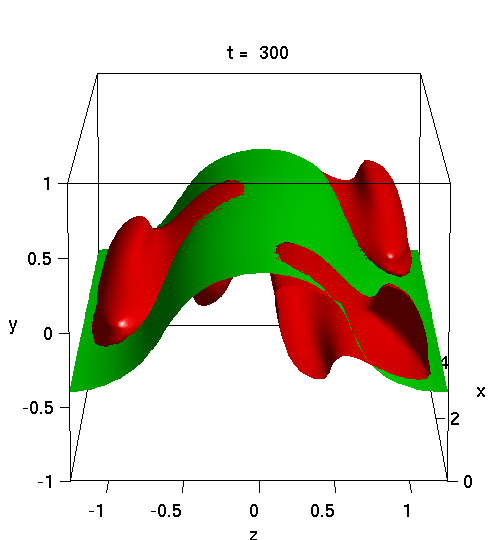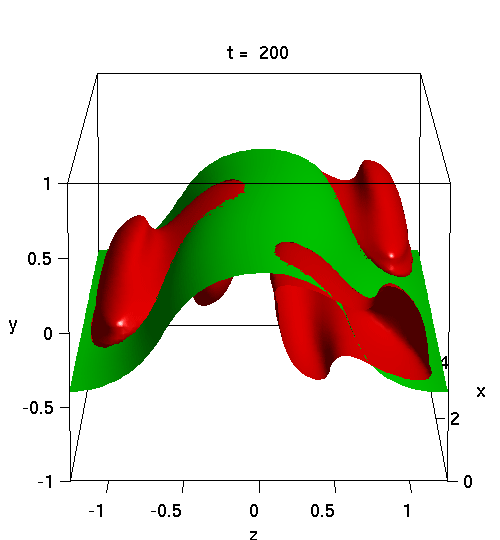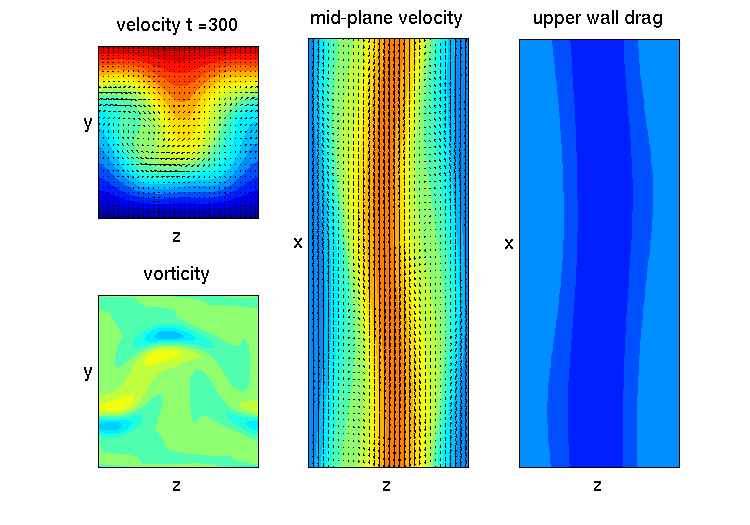Rεςεαρch
42.81675,-73.926742
Lower branch coherent states in shear flows: transition and control
[paper]Understanding the nature of transition to turbulence has been one of the most important problems in fluid dynamics that has attracted attention since Reynolds' first pipe flow experiments in 1883. But the progress in understanding the transition threshold and controlling transition to turbulence has been slow due to the highly nonlinear nature and complexity of turbulent shear flows.
Our approach is through the exact coherent structures in plane Couette flow. They come in pairs with upper and lower branches that bifurcate from a neutrally stable streaky flow. The lower branch exhibits an asymptotic structure that consists of O(1) streaks sustained by O(R-1) streamwise rolls and a weak sinusoidal eigenmode. These unstable lower branch states have a one-dimensional unstable manifold and may be viewed as the 'backbone' of the phase space boundary separating the basin of attraction of the laminar point from that of the turbulent state. The very low dimensionality of the lower branch unstable manifold suggests new turbulence control strategies.
The two movies were created at Reynolds' number 1000. The flow decays back to laminar flow in one direction (left), and shoots to a turbulent state in the other direction (right).


Below is the cross-section view of the transition to turbulence from the perturbed lower branch steady state in plane Couette flow. Left top: the velocity field in a cross-section, red indicating flow moving towards the viewer, blue away. Left bottom: the streamwise component of the vorticity, red positive, blue negative. Middle: the velocity field in y=0 plane. Right: drag on the upper wall, red high drag, blue low drag.
